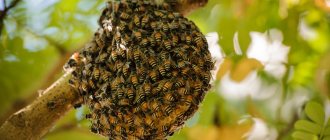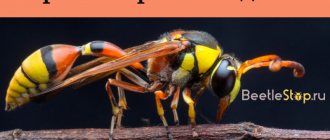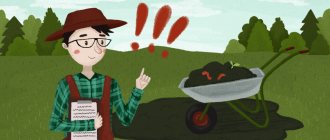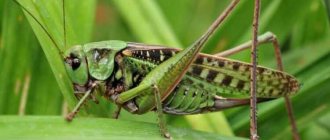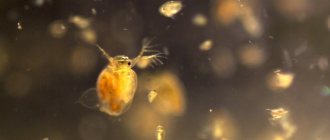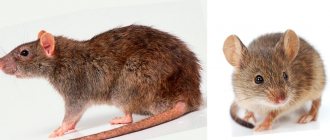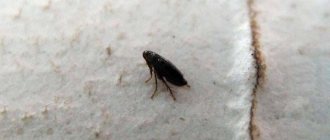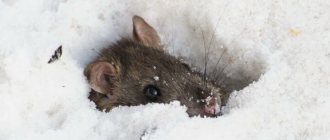Slugs are gastropods that are serious enemies of summer residents. In the most favorable years for their development (cool and damp), they are capable of destroying almost the entire crop. How to deal with slugs?
Slugs, for the most part, are not at all picky about food and therefore eat everything that comes their way: plant leaves, moss and even mushrooms. Although they prefer, of course, succulent leaves. At first, the mollusks eat away the irregularly shaped holes (they are often used to “identify” the pest), and then, if the slugs are not dealt with, they eat the entire leaf, leaving only hard veins.
Appearance
The slug's body has three parts:
- Head . Her clam can lift up. The head is equipped with two pairs of tentacles. One of them is long, with eyes and smell receptors. The second pair is short, these are the organs of taste and touch. There is a mouth opening on the lower front of the head.
- Body equipped with a mantle . The body is stretched and slightly flattened. The mantle is located immediately behind the head on the dorsal side. In this convex collar there is a lung, and on the side on the right there is an outlet for collecting air for breathing. Near the anal exit.
- Leg . This is the outermost part of the mollusk, with the help of which the slug crawls.
The skin of a gastropod is thin, hairless and constantly covered with a special secretion (mucus), which cools the body, helps it glide and protects it from enemies. The color of the body is also protective: sand, brown, gray, brown, sometimes with small white and black spots. The sizes can be diametrically opposite. It all depends on the species, there are 2 mm ones, and there are also 30 cm giants.
Reproduction of slugs
This mollusk is by nature a hermaphrodite, that is, the reproductive systems of both sexes. But a slug cannot fertilize itself; it requires the seminal fluid of another member of the family. Therefore, slugs use scent to find a partner, perform a short mating dance (quite an interesting spectacle), and cross-exchange of sperm occurs. Now both slugs are ready to lay eggs.
Each clutch is a pile of 20-30 eggs in the moist depths of the soil. It takes 2-3 weeks for the larvae to mature. Newly hatched slugs begin to actively feed on soil organic matter, and after 6-7 weeks they are sexually mature individuals, ready to reproduce. One mating is enough for the mollusk to lay eggs for a month or more.
In one summer, the mollusk produces up to 500 embryos. The last offspring, the autumn one, overwinters in the soil and hatches with the onset of warm weather. The slug, having made its last clutch, dies. If for some reason the slug did not have time to lay eggs for the last time, then it remains to overwinter in order to give birth in the spring.
Habitat Features
Since slugs do not have a shell shell, like their relatives - snails, their existence is highly dependent on climatic conditions (temperature and humidity). Ideally, the “warm-up” of the air should be within +15+19C. And the humidity levels must be very high. It is not for nothing that the mollusk is always covered in slippery mucus; drying out is death for it. He breathes not only with his lungs, but also with the entire surface of his wet body.
This explains the fact that slugs are exclusively nocturnal when there is no scorching sun. However, during cloudy weather, after a good rain, they can appear during daylight hours. If the season is dry and hot, then the slugs climb deep into the soil, form a slug cocoon and enter a state of anabiosis (temporary hibernation). Dense grassy vegetation is also to the liking of naked mollusks. If you keep the area clean, weed out and loosen the soil, you will make life much more difficult for the slugs.
Slugs have only one leg, but they have very developed strong muscles, so they crawl perfectly. When in danger, they retract their tentacles inside and, curling up tightly, assume a spherical state.
Common mistakes: what not to use
The first instinct is always to place traps and bait where slug and snail damage is most severe and where the plants are most valuable. But be careful. The enticing scent will attract slugs from all over your garden, and along the way to the desired treat are delicious, succulent plants that just need protection.
Plants are sprayed with a solution of mustard powder early in the morning, in the evening after sunset or in cloudy weather, because in bright sunshine the moisture quickly evaporates, and the mustard remaining on the leaves can cause burns.
How they appear in a vegetable garden or garden plot
On your land, you need to look for slugs under large leaves, in thickets of grass, and heaps of compost. In addition, mollusks live in damp cellars, basements and cellars.
In natural conditions of the wild, land gastropods maintain by their existence the ecological equality of forest and field communities. When we transfer an infected plant from a forest, field, or steppe to our site, we ourselves provoke the reproduction of the slug in our possessions. After all, the pest very readily accepts cultivated plantings as a food source (more than 150 plants) and begins to actively reproduce in a new place.
Constantly watering the beds and flowers and maintaining moisture makes his stay even more comfortable. And favorable weather conditions (humid and warm springs, autumns and summers, mild winters) contribute to the massive takeover of human-cultivated territories by slugs.
Are they harmful?
In the wild, slugs perform an important function in processing plant and animal remains, eat lichens, mushrooms, and are a necessary link in the food chain. Once on a personal plot, they become man's worst enemies.
Under favorable climatic conditions, their gluttony leads to the destruction of the entire crop if countermeasures are not taken in time. They affect seedlings and seedlings, tubers and roots, plant leaves, berries and fruits. Pests do not disdain decorative flowers either.
In addition, they contribute to the spread of various viral and bacterial diseases throughout the area. Plant tissues under the mucus begin to rot.
These creatures are also dangerous for poultry, as they are carriers of helminths.
Slug diet
On the menu, the mollusk prefers the healthiest and strongest plants. In the oral organ it has a jaw, equipped with a sharp edge with a chitinous coating and a tongue, with chitinous grater teeth (scientifically called radulas). The slug grinds food with its jaws and leaves clearly visible cuts with a smooth edge on the fruits.
The pest's taste preferences include mushrooms, weed plant remains, juicy pulp of garden crops, berries, root vegetables, and vegetables. In addition to destroying the crop, the mollusk is also capable of “rewarding” what it did not eat with mold, bacteria or viruses. Some varieties of the parasite are intermediate hosts of worms that parasitize poultry. That is why you should never feed found slugs to chickens, ducks, geese and other homestead animals.
Even if a slug does not damage the plant, but simply crawls over it, then this will also lead to nothing good. Firstly, the slime trail left behind the mollusk contaminates the plant, clogs the pores and provokes rotting. Secondly, it’s simply unpleasant, and even after washing, it’s unlikely that anyone will want to eat such a vegetable “treated” with slugs.
The slug loves some crops especially tenderly (can be used to make bait):
- Cabbage.
- Dandelions.
- Salad (until the arrow forms).
- Strawberries.
- Woodlice grass and shepherd's purse.
- All cruciferous vegetables (except mustard).
Natural enemies of slugs
First, it's worth noting the environmental conditions:
- Mollusks have a persistent dislike for the sun, as well as for high temperatures . Ruthlessly destroying weeds and thickets of unnecessary grass leaves more chances for the sun's rays to penetrate every corner of your site.
- Dry soil is also a problem for the pest . By the way, for this reason, it is recommended to water the ridges in the morning, when the parasite crawls away to rest, and not in the evening, when he starts eating and the warm, moist soil is an unearthly bliss for him. The ground sprinkled with “inconvenient” material (needles, ash, straw, fine gravel) greatly complicates the movement of the parasite.
For slugs, owners of an excellent sense of smell, some representatives of the flora are unbearable:
- Planting onions, garlic, watercress.
- Fragrant herbs - caraway, sage, oregano, basil.
- Flower crops - geranium, white clover.
In the animal world, slugs also have enough enemies and this can be successfully used in the fight against pests.
Birds:
- Magpie.
- Rook.
- Thrush.
- Crow.
- Starling.
- Jackdaw.
If you create suitable conditions for birds, hang feeders, drinking bowls, and birdhouses, then grateful birds will be happy to settle on your site and will become indispensable assistants in the fight not only against slugs, but also other garden pests.
Mammals:
- Hedgehog.
- Mole.
- Shrew.
Rodents are good at dealing with gastropod parasites, but frankly speaking, the presence of the same moles on the site is a very dubious pleasure. They themselves cause a lot of trouble for gardeners with their habits and lifestyle.
Freshwater and insects:
- Lizard.
- Toad.
- Frog.
- Ground beetles (and larvae).
Do not forget that when attracting fauna to help you, you cannot use insecticides to kill slugs. After all, pesticides will destroy not only them, but also other representatives of the fauna, and will also settle on the crop. Chemical means of protection are used only in conditions of an abnormal, massive invasion of parasites, when all other methods no longer help.
Ways to fight
You can get rid of slugs in your garden using both pesticides and more humane methods.
- Chemical preparations are recommended for use in highly contaminated areas. It must be borne in mind that insecticides will not help, since mollusks are not insects. You'll have to spend money on special tools. “Predator”, “Anti-slug”, “Thunderstorm”, “Slug-eater” help well.
- If you plant plants around the perimeter and inside the area whose smell cannot be tolerated by pests, then you don’t have to worry about their invasion. Onions, garlic, marigolds, basil, mustard, and creeping clover have such abilities.
- Purchased and homemade traps will help reduce the number of individuals. To do this, pour beer or kefir into a jar and cover it with earth. There should be enough liquid to drown the pest.
- Collecting shellfish by hand at dawn is an ineffective but least expensive method. It can give results if there are few slugs.
- Folk remedies take advantage of the vulnerability of gastropods. Apply slaked lime and copper sulfate, applying them along the perimeter of the site.
- Agrotechnical practices are aimed at creating unfavorable conditions for the life of pests. They include draining the area, timely weeding, and removing debris.
The best slug repellents
Thunderstorm (Meta)
Slug spray was originally produced in Switzerland under the name "Meta", and has been considered one of the most productive and safe means of killing garden slugs for about a century.
What is it issued in (form of release)? Packaged in the form of blue granules. One package contains 15 g or 60 g of the drug.
Chemical composition. The base substance of “Thunderstorms” is metaldehyde and other auxiliary additives.
Method of action of the drug . Since this is an intestinal and contact drug, it exerts its effect upon direct contact with the slug’s body. The granules quickly absorb moisture and literally dry out the pests, depriving them of protective mucus and the ability to move easily. Slugs also readily eat pellets and die from poisoning within 2 hours.
Duration of action of the drug. From 2 to 3 weeks. Shelf life 24 days.
When to use? The effectiveness of the drug has been proven even after heavy rainfall. “Thunderstorm” can be used both in dry, windless weather and in the rainy season, when slugs are attracted to a humid environment. Granules with the first sprouted stems and blossoming leaves are scattered on the plot of land. Traditionally, “Thunderstorm” should be applied at the beginning of spring to protect young, fragile shoots.
Dosage . The standard consumption rate is 30 g of the drug per 10 square meters. m of territory or 15 g per 5 sq. m. m. 2-3 treatments per season are enough.
Mode of application . The drug is optimal for protecting grapes, berries, as well as citrus, vegetable, fruit, and flower crops. Granules of the substance are scattered under plants in places where slugs accumulate: between rows and on paths. You should avoid getting the granules into the leaves of cabbage or lettuce so that the poison does not end up in the food. The granules are destroyed by burning.
Toxicity . Due to the content of some harmful additives in the granules, “Groza” kills slugs, but can attract other pests and scare away birds that would help fight them. It is not advisable to use "Thunderstorm" in rooms for storing crops, such as cellars with potato tubers and other vegetables.
The drug is practically harmless to earthworms, bees, fish, algae and most plants. Hazard class for humans - 3.
The drug is extremely toxic for both adults and children and pets if it enters the body with food or in the eyes. After harvesting, any vegetables and fruits must be thoroughly washed if “Groza” was used nearby. When working with a moderately hazardous substance, you need to protect your eyes and respiratory tract with goggles, a respirator or a gauze bandage.
Ulicide
An effective and natural remedy used in the fight against slugs and snails, which kills pests by intestinal contact. Produced in Ukraine.
What is it issued in (form of release)? Sold in packs of 20 g (70 pieces) and 50 g (50 pieces), contains small bait granules, colored blue.
Chemical composition. The key substance is iron phosphate. Other ingredients include a grain mixture, wood ash, black pepper, hops, mustard, sugar, salt, and kaolin.
Mode of action of the drug . Dehydrates the bodies of slugs after direct contact, after which they die under a layer of soil.
Duration of action of the drug . Once the slugs have consumed the pellets, it may take a week before they die. Compatibility with other drugs. Thanks to its ecological composition, it can be safely combined with other types of anti-molluscan substances, including tobacco dust.
When to use? The drug should be used at the first appearance of slugs in the garden beds. The granules are resistant to erosion, so Ulicide can be used even after it has rained. Consumption rate: 3-5 g per 1 sq. m. plot. One treatment per season is enough.
Mode of application . The granules are scattered in the indicated doses under plant bushes or in paths and between rows.
Toxicity . The poison is absolutely safe for bees, earthworms, garden and ornamental plants. Due to its natural composition, the drug is not attractive to animals and birds, which eliminates their poisoning. After the expiration date, the product breaks down in the soil into natural elements - iron and phosphorus. Does not pose any danger to human health.
Metaldehyde
One of the most famous and inexpensive drugs used in the fight against slugs and snails. The most common drugs are those produced by Lonza and August, and Green Pharmacy Sadovoda.
What is it issued in (form of issue)? Packaged in packages with small blue granules.
Chemical composition . The main substance in the composition is poisonous metaldehyde (tetramer of acetaldehyde). Lonza's Metaldehyde uses bittering additives that repel dogs.
Mode of action of the drug . Attracts pests using the same principle as regular beer or fermented fruit.
Duration of action of the drug. From 14 to 21 days. At the end of the shelf life, it completely decomposes in the ground.
When to use? Manufacturers claim that the effectiveness of the drug remains even after frequent rains, but the experience of gardeners shows that the granules quickly dissolve in water (2-3 rainfalls are enough).
Has a detrimental drying effect on slugs upon direct contact. If ingested, it destroys the digestive system. The preparation should be spread in warm and dry weather, with the first appearance of slugs, in the midst of spring. Does not require special preparation and is available in ready-made granules. The consumption of the substance is 15 g per 5 sq.m.
Method of application : Scatters in the required places under the leaves of plants. For greater savings, you can place the granules between the rows.
Toxicity . 3rd class of danger to humans. The drug is dangerous for pets (especially dogs), adults and children. Not too toxic to fish, microorganisms and worms. Experts do not recommend spreading Metaldehyde near fruit-bearing plants. Even after thoroughly washing vegetables, fruits and berries where the drug was spilled nearby, there is a minimal risk that some of the poison remains.
Protective barriers
A protective strip is established around the vegetable garden or garden. To make it, they take rough or sharp materials that are uncomfortable for mollusks to crawl on. There are many options: crushed shells, coarse sand, crushed nut shells, slaked lime or wood ash. Dried coffee grounds, mustard powder and superphosphate help.
It is best to scatter the product not in one strip, but in several. The distance between them should be 150-200 mm. Garden trees or bushes are protected in the same way if they grow at a great distance from each other. A protective barrier is built around them.
Copper barriers
Gardeners note that copper and any materials containing it often help. A simple but effective way to save the crop without resorting to the use of chemicals is to limit slugs’ access to the plants by creating a copper barrier.
When a slug's abdomen comes into contact with a copper-containing coating, a chemical reaction occurs that destroys the mucus. The copper tape generates a small electrical charge that can stop slugs and snails. Of course, it is difficult to create a protective screen around the entire garden. But you can fence the bases of trees, beds, bushes, and pots with plants with a copper ring. Copper wire or wire, self-adhesive copper tapes and meshes are suitable for this.
